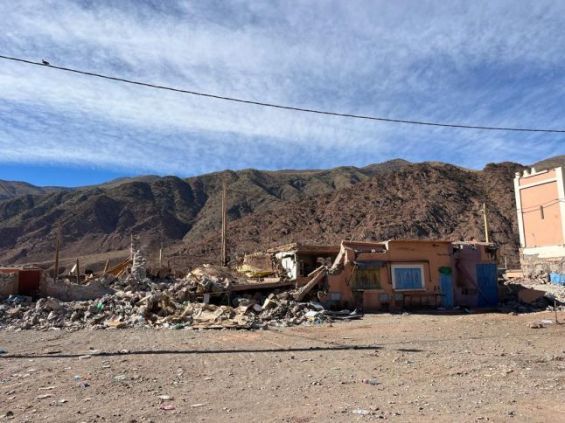A recent study of the 2023 Al Haouz earthquake by the United States Geological Survey (USGS) reveals that the shocks have caused a rupture of around 25 kilometers beneath the surface.
Published on Tuesday, December 12, by the peer-reviewed digital-only journal The Seismic record, the study suggests that the depth of said rupture is very uncommon for what might be expected for the region.
«The earthquake centroid depth of 25 km is noteworthy, because it shows slip extending beyond common estimates of seismogenic depth», reads the survey titled «Rapid Source Characterization of the 2023 Al Haouz, Morocco, Earthquake» and drafted by researchers from the USGS National Earthquake Information Center (NEIC).
US Geological survey researchers indicate that the earthquake was the result of a slip that occurred at the depths of 15-25 kilometers, based on finite-slip models that used seismic and geodetic data.
A rupture did not break the surface
«Our analysis indicates that the earthquake was the result of oblique-reserve faulting in the lower crust on either a steeply north-dipping fault or a moderately south-dipping fault», reads the same study.
Moreover, USGS researchers believe that although events of this size are not unexpected in the Moroccan High Atlas (MHA) Mountains, the Al Haouz earthquake remains noteworthy because it «nucleated in the lower crust and occurred on a blind thrust fault in a region with well‐described surface faults that are a recognized seismic hazard in the western MHA».
The deep rupture of the Al Haouz earthquake, hence, did not break the surface, making it difficult to identify which faults were involved in the earthquake, said USGS seismologist William Yeck.
«We have some sense of the (area's) large surface faults and some sense of how they dip and how they extend at depth, but their shape can change at depth, which makes it difficult to pin this to a fault on the surface», said Yeck.
Yeck explained that without a good understanding of the aftershocks, it is difficult to pinpoint where the slip occurred.
For the record, the Al Haouz earthquake occurred on September 8 at 23:11 with a moment magnitude of 6.8–6.9 in Morocco's Marrakesh–Safi region. The earthquake's epicenter was located 73.4 km southwest of Marrakesh, near the town of Ighil and the Oukaïmeden ski resort in the Atlas Mountains. The devastating event claimed the lives of nearly 3,000 people and injured over 5,500 others.





 chargement...
chargement...













